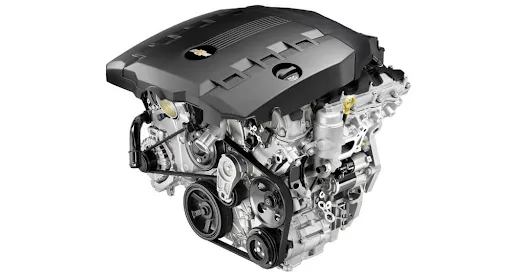Important Considerations for Making Certain Top Quality and Long Life in operation Engines
When thinking about the acquisition of an utilized engine, ensuring its high quality and longevity needs a multifaceted strategy. Maintenance background is an essential aspect, as it offers understanding right into the engine's past treatment and potential future dependability. Performance screening is additionally crucial, supplying a snapshot of the engine's operational efficiency.
Engine History Analysis
In the realm of used engines, a comprehensive engine background analysis is extremely important to guaranteeing top quality and reliability. Comprehending an engine's past can provide critical understandings right into its efficiency capacities and potential future longevity.
Engines that have actually gone through substantial fixings might have underlying concerns that might resurface. Analyzing the engine's gas mileage can serve as a sign of wear and tear. An engine used mainly for long-distance highway driving may be in far better problem than one subjected to regular stop-and-go city traffic.
Fundamentally, an extensive examination right into an engine's history is vital for making informed investing in decisions. used engines for sale.
Comprehensive Inspection Guide
While understanding an engine's background provides useful context, a comprehensive assessment is the next action to ensure its existing condition lines up with historical information. The evaluation must begin with an aesthetic assessment, looking for signs of leakages, deterioration, and uncommon wear. Examine the outside for oil stains or coolant marks, which might indicate underlying concerns.
Following, review the engine's mounting system for any kind of loosened bolts or problems that could impact efficiency. Pay very close attention to the condition of belts and pipes, as these parts are important for optimum engine functionality. Take a look at for splits, fraying, or any kind of signs of damage.

Recognizing Deterioration
Identifying indicators of damage is crucial for assessing a used engine's longevity and dependability. It includes a careful assessment of different engine elements to identify their current state and potential future efficiency. Usual signs consist of visible deterioration, which can affect metal parts and endanger architectural honesty. Corrosion on or around the engine block, cylinder heads, and exhaust manifolds is especially worrying.
An additional essential element is inspecting the engine's seals and gaskets. In addition, irregular noises throughout engine procedure, such as knocking or ticking sounds, may show inner damage or excessive wear on moving parts like pistons or bearings.
The problem of belts and tubes is equally crucial, great site as they play an essential function in the engine's total feature. Broken or torn belts and brittle hose pipes are indicators of maturing that might lead to engine failing if disregarded. Last but not least, analyzing the oil condition and filter can supply understandings right into previous upkeep techniques, as dirty oil or stopped up filters recommend disregard and increased wear.
Performance Testing Fundamentals
Evaluating the wear and tear of engine parts sets the phase for a detailed assessment through efficiency testing. Efficiency testing serves as a vital measure in figuring out the operational honesty of a used engine.
Making use of dynamometers is a typical method in efficiency testing. These tools measure the engine's result across numerous conditions, offering an in-depth profile of its capability. Furthermore, on-road testing matches dynamometer evaluations by observing engine habits under typical driving circumstances, guaranteeing it satisfies the needed standards for both safety and performance.
Advanced analysis tools additionally boost the capability to pinpoint underlying problems. These devices assess engine administration systems, recognizing mistakes in digital elements that might impact efficiency. Comprehensive screening not only confirms the engine's operational condition yet also aids in forecasting future maintenance requirements. This makes certain the used engine can deliver trustworthy anonymous efficiency over an extensive period, thus maximizing its value and service life.
Maintenance and Care Tips
Correct upkeep and care are vital to lengthening the life expectancy of an utilized engine and ensuring its constant performance. Regular oil adjustments are extremely important; using the manufacturer's recommended oil kind and quality can stop extreme wear and tear. Additionally, oil filters should be changed simultaneously to keep ideal lubrication and tidiness within the engine.
Keeping an eye on fluid levels, consisting of coolant, transmission liquid, and brake fluid, is vital. Guaranteeing these fluids are at appropriate degrees aids prevent overheating and other mechanical problems. Evaluating belts and hoses for indications of wear, such as splits or fraying, can avoid potential failings that might bring about costly repair work.
Routine check inspection of the air filter is likewise needed, as a clean filter guarantees reliable airflow and combustion, therefore maximizing engine performance. Ignition system should be checked and changed when required to preserve efficient gas combustion and protect against engine misfires.
Last but not least, routine diagnostic checks making use of professional devices can determine possible issues before they become significant troubles. By sticking to these upkeep and treatment pointers, made use of engine owners can guarantee their engines remain reputable, effective, and capable of doing well over an extended duration.
Conclusion
